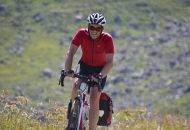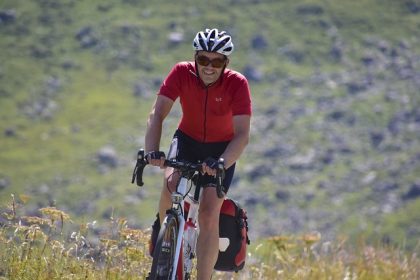Improve Your Balance, Improve Your Health

WASHINGTON — Losing your balance and taking a fall is a common occurrence. Sometimes it’s no big deal and you get right back up. Other times, it could lead to an injury. Older adults have a higher risk of falling with more serious consequences.
Improving balance can benefit people of all ages. We’ll explain how balance impacts overall health and fitness, its extra importance for aging adults and some simple exercises to start working on it today.
How Does Balance Impact Your Health?
Balance refers to being able to maintain your center of gravity and evenly distribute your weight over your base of support. In other words, you can stand or sit without falling. Along with strength, endurance and flexibility, it’s one of the four main types of exercise skills.
Your balance may become impaired if you have certain medical conditions, are recovering from an injury or are drinking alcohol. Having good balance impacts your health in the following ways:
- Cognitive function: It starts in your brain. Research shows that people working on improving balance may have better cognitive health.
- Improves proprioception: Proprioception refers to awareness of your body in space, where your limbs are and what’s around you.
- Prevents falls and injuries: Having good balance can help you stop yourself from taking an accidental fall leading to injury.
- Improves athletic performance: Balance is key to exercise and sports performance. In many athletic activities, you have to make quick movements and shift your weight around. The ability to balance in changing positions can improve performance and prevent injury.
- Premature death: In 2022, a study on balance was published in the British Journal of Sports Medicine. The study reported that people who can’t balance on one leg for more than 10 seconds may have double the risk of all-cause mortality than those who can.
The Importance of Balance for Seniors
As adults age, they naturally begin to lose muscle mass, strength, flexibility and balance. Falling (often caused by losing balance) is the second leading cause of injury-related deaths worldwide.
According to the National Council on Aging, one in four Americans over age 65 fall every year. The Centers for Disease Control and Prevention reports the following statistics on falls:
- There are over 36 million reported falls by older adults every year, leading to over 32,000 deaths.
- One in five falls causes a serious injury, including head injuries and broken bones.
- Over 95% of hip fractures are caused by falls, and three-quarters of these hip fractures occur in women.
- Women are more likely to fall than men.
In addition to contributing to a higher risk of early death, falls, fractures and injuries threaten the quality of life of older adults. They may lose their independence and mobility, leading to isolation, loneliness, and further mental and physical health challenges.
The good news is that many studies show that improving balance can help reduce the risk of falls in older adults. Research suggests combining the following methods to help improve balance in older adults:
- Specific balance and proprioception training.
- Increasing muscle strength through resistance exercise.
- Improving walking through aerobic exercise.
In some studies, people who did no physical activity had worse balance than those who were active. The American Heart Association recommends older adults perform balance exercises at least three times a week, in addition to a regular exercise program.
Best Exercises to Improve Your Balance
People of all ages can add at least some of these exercises to their routine:
- Weight shifts: Stand upright and slowly shift your weight to one foot, picking the other off the ground, then switch sides.
- Single-leg balance: Lift one foot off the ground and balance for at least 10 seconds, then repeat on the other side. Over time, work up to a 30-second hold.
- Hold something: Start by holding on to something stable with both hands. Then you can remove one hand. Then use just your fingers. Finally, go hands-free.
- Unstable surface: Try balancing on something soft like a pillow for a more challenging exercise.
- Eyes closed: To increase the difficulty of the challenge even more, close your eyes.
- Walk in a straight line: You don’t need to hop up on the balance beam at the Olympics, but try walking in a straight line, placing one foot in front of the other, heel to toe.
- Core strengthening exercises: Strengthening your core is known to improve balance.
- Bird dog: This exercise is performed from a tabletop position on your hands and knees. Lift your right arm up and reach it forward, balancing on your remaining limbs. Then, try just your left arm. Next, straighten your left leg, lift it up, and repeat on your right. The final version involves reaching your right arm forward and left leg back simultaneously, returning to the starting position and repeating on the opposite side. This exercise builds balance and coordination while strengthening all your muscles.
- Yoga and tai chi: The Mayo Clinic recommends yoga and tai chi to improve balance in older adults.
- Aerobic and resistance exercise: Regular aerobic exercise, like walking, helps improve balance. Strengthening your muscles in resistance exercise has also been proven to help. Lower body exercises that focus on one leg at a time — like lunges, step-ups, step-downs and lateral (side-to-side) movements — can really help.
It’s All About Balance
Aging is part of life and many conditions can’t be avoided. However, you can significantly reduce your risk of falling by working on your balance. Try out our exercises to live a long and balanced life.
You can reach us [email protected] follow us onFacebookandX.

























